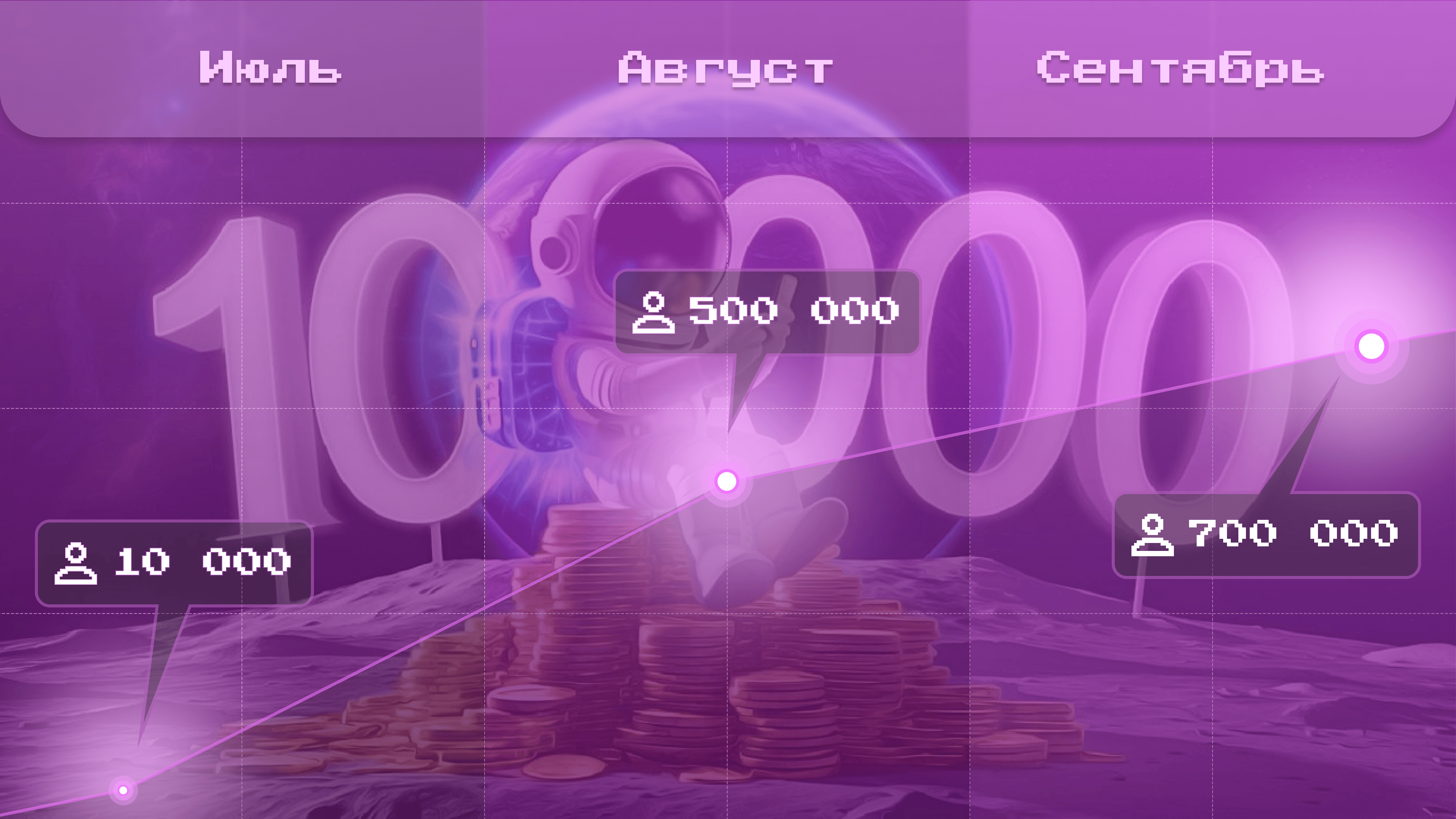How We Created a Hamster Kombat Clicker-Style Game with 700,000 Users
Have you tapped the hamster yet, or haven’t given it a try? Well, either way, we get it. While some call games like Notcoin, Hamster Kombat, and Blum hype scams, others are riding the trend, launching their own versions, and profiting alongside their users. Here, I’ll share how and why we created a new clicker game and why it’s beneficial to promote these games on Telegram Mini Apps.
Hey there! Daler here, co-founder of ByteTown. We develop web services, promo sites, mobile applications, and Telegram Mini Apps, often starting with just a business objective.
Remember when everyone was obsessively tapping hamsters earlier this year to make quick money? In just a month, we created the MVP for a similar app, and we’re here to explain why these products benefit creators, users, and the market alike. Let’s dive in! 🚀
Client: Entrepreneur from the USA, a trend-follower
In June 2024, Russian media began buzzing about Hamster Kombat, which launched on March 26 and quickly amassed millions of registrations. Our client, seeing the potential, contacted ByteTown in mid-June with a task: to create a similar clicker game for Telegram Mini Apps, which run directly within the messaging platform without requiring downloads or installation.
The gameplay is simple: users tap an image to earn virtual coins, while the client generates revenue from referral programs, crypto exchange registrations, task completions, and ad placements.
Our client wanted to give the game a cosmic theme with randomized mechanics. Users tap a rocket to earn virtual coins, which they might exchange for tokens in a blockchain ecosystem.
Time was of the essence—our client wanted to launch the app while it was still hot. We agreed to develop a game with a friendly interface and a system capable of handling thousands of concurrent users. So, we got to work.
Coding Hurdles and Time Crunch: Limited to Just One Week for Design
Given the tight timeline, we committed to delivering the MVP in a month. Normally, designing would take about two weeks, with development adding another six. Here’s how we split the work:
- Design: allocated one week
- MVP Development: thanks to the client providing pre-existing code, we planned to complete the MVP within three weeks.
The client informed us that they had bought the base code from a freelance developer through a marketplace. However, it lacked key features needed for Rocket Rush, such as a mining card store, automatic coin mining, daily tasks, multi-language support, and ad monetization options. The code also wasn’t optimized for scalability or stability under high loads.
Starting from scratch wasn’t an option due to time constraints, so we opted to improve the existing code as much as possible and build the necessary features.
Optimized Development through Time & Material Contract
We agreed to work using a Time & Material approach, allowing us to focus on actual hours worked rather than sticking to a fixed detailed specification.
We structured the design process to minimize delays by having tasks run concurrently. While the analyst specified functionality requirements, the designer created screen prototypes. We even tested competing clicker games, tapping hamsters to understand what users expected.
The finalized design included all possible app states, and we used AI to generate custom icons and unique clicker images, saving time on visual assets.
Diving into Development: Adjusting the Code On the Fly
With design finalized, we tackled the coding. The pre-existing code revealed several hidden bugs, requiring us to prioritize fixes. We encountered an issue where the app wouldn’t respond when a new user clicked “Start.” This was due to the database connections not closing properly with each /start command. While fixing this issue was straightforward, identifying it took considerable time.
We also planned the in-game economy with the client, setting prices, rewards, and scaling benefits with user level. Our team rigorously tested the balance to ensure players could progress at a reasonable rate.
In the end, it took three weeks to deliver the first version of the app with a minimal feature set, built on a clean codebase, and ready for initial release.
Rocket Rush Launch: Immediate Market Response
The MVP was released to the client for marketing tests, attracting thousands of users. We closely monitored key metrics, like the percentage of new users who started tapping, the average number of friends each user invited, and how users progressed through stages.
Our clicker game showed strong virality—each new user invited five friends on average, a promising result.
Currently, peak users can reach 15,000 online, with total active users reaching 700,000 in the past 30 days.

Key Takeaways from Rocket Rush Development
Developing Rocket Rush was an insightful experience. Clicker games on Telegram Mini Apps have become a phenomenon in 2024, and here’s what we learned:
- User growth and virality are high. The five-invites-per-user metric provided strong traction, making it a cost-effective traffic source.
- No downloads required. Built-in authorization in Telegram significantly boosted conversion.
- In-messenger purchases are easy to implement, supporting projects with impulsive buying patterns.
- High competition. Many similar clickers have emerged, increasing acquisition costs. We learned that we could streamline future projects by overlapping the development of initial and follow-up versions, enabling us to move faster without waiting for a complete design handoff.
Currently, Rocket Rush’s peak online users reach 15,000, managed by a single powerful machine with a 16-process Node.js cluster.
The Time & Material approach helped us start quickly, adapt to changes, and avoid lengthy specification processes.



